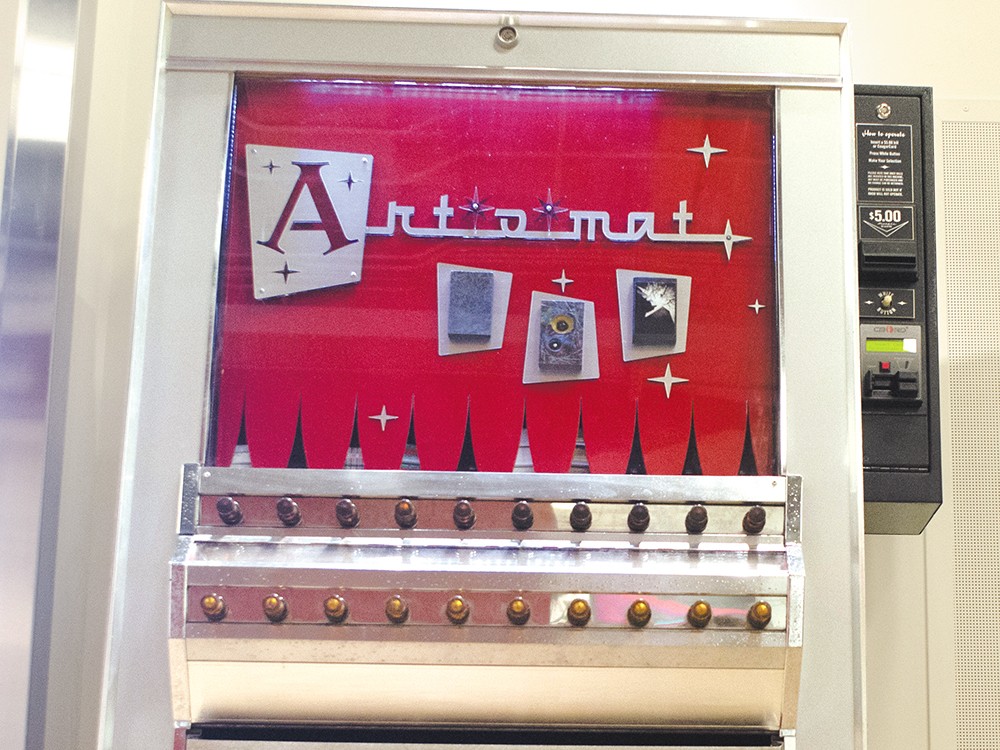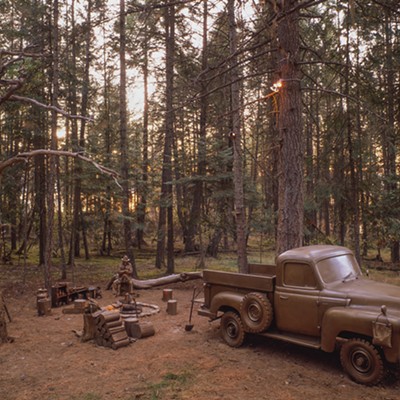By the vending machines? By the art gallery? I entered the Compton Union Building at Washington State University unsure where to find it, and scanned the main floor where students lounged between classes: A soda machine? No. Snacks? No. Redbox? No.
And then there it was, gleaming under the lights at the far end of the building near the auditorium: The Art-o-mat. Its amber knobs protruded in two tight rows at the bottom; its silver casing gleamed on all sides. Once it was there before my eyes, it made perfect sense: A retrofitted vending machine that doesn’t sell candy or gum or cigarettes, but art.
There are more than 100 Art-o-mat machines installed around the country, each one a refurbished cigarette vending machine salvaged from the days when every bar had one right by the jukebox. Most have an angular, retro look and reside in carefully vetted museums, libraries, universities and Whole Foods stores.
This one in particular, decked out in crimson and gray, was brought to WSU as a new long-term art exhibit. Inside, little works of art precisely the size of a pack of cigarettes wait for someone to slip a $5 bill into the machine and pull a knob.
It’s easy to be paralyzed by the options: mixed-media collage, tiny crochet creations, earrings, paintings, carvings, drawings, photography and others that aren’t definable as one thing or another. Each comes from a different artist, and most seem more whimsical than serious.
Finally, with a shrug, I settled on a wood-burned art block from North Carolina. Because why not? With a thunk, the box that was now mine landed in the silver tray at the bottom.
Eagerly, I opened the box, and the delight of opening it was accompanied by a feeling of insatiability. I liked my little work of art, but there were so many other boxes still in the machine. I wanted them all. Afterward, describing it to people, I kept saying “arts” in the plural — “the hard part is that there are so many little arts to choose from” — as if the action of selecting a single knob had fragmented the whole concept of art into collectible little commodities.
North Carolina artist Clark Whittington, who invented the first Art-o-mat for an exhibit in 1997 and still retrofits each machine himself, laughed when I told him about my reaction of wanting more. The idea for the very first one, he says, came from a friend of his whose Pavlovian reaction to the crinkle of a snack wrapper would send him to the vending machine for a snack of his own. And this is partially the intention — the vending machine turns our nation of consumers into consumers of art.
“We like to own things. We like to touch things,” he says. “We are very materialistic.”
By giving ordinary folks the chance to collect affordable art, the Art-o-mat is a counterpoint to both the “stigma” around art and the exclusivity of the big-money art world. Whittington comes from an area of the South that’s very practical, he says — the kind of place where people wonder whether there’s a point to art, and where congressmen have tried to kill the National Endowment for the Arts. But he also looks critically at the modern art world, where works without any soul are valued at hundreds of thousands of dollars.
Art-o-mat breaks through those constraints at a personal level: Art from a vending machine lets us all collect works of art, own them, love them.
I ask Whittington if he ever secretly watches people interact with his inventions, just to see their reactions. Just recently, he says, he was out of town and stopped by a cafe where one had been installed. He doesn’t always go talk to people who approach the machine, but this time he decided to.
“I saw that they smiled when they opened the box,” he says.

















